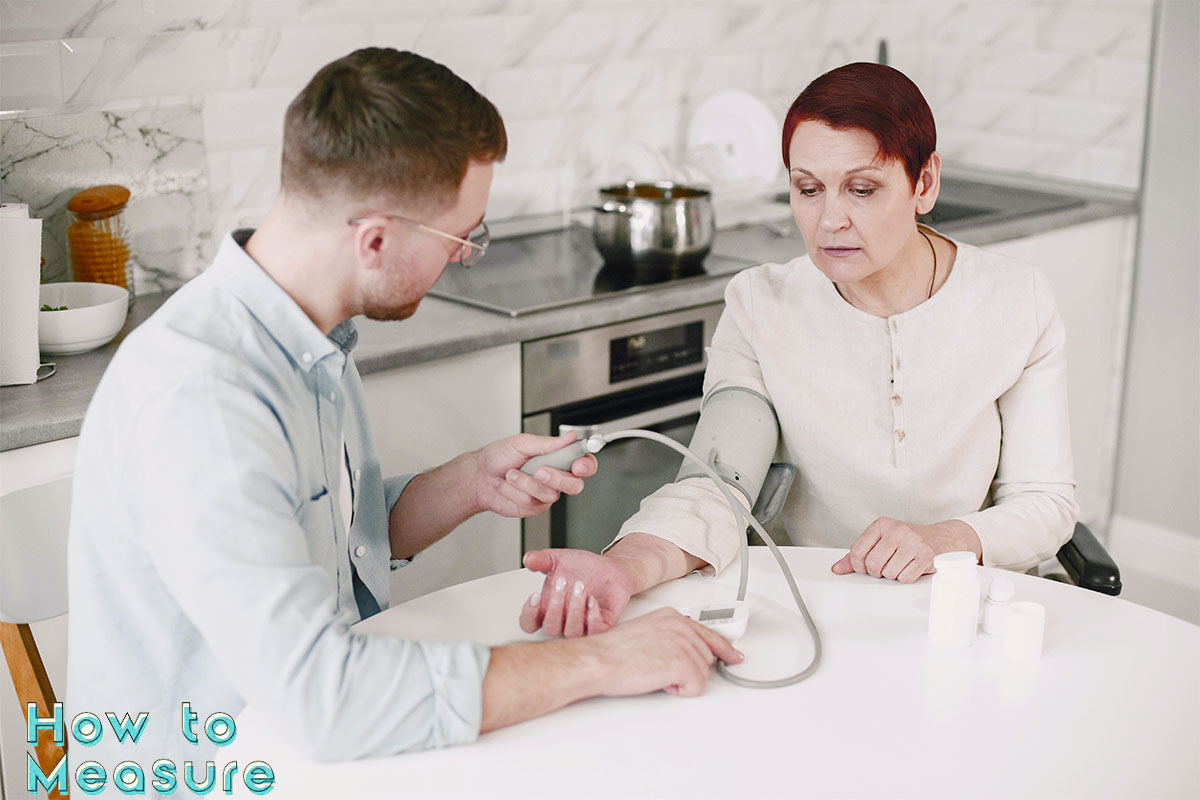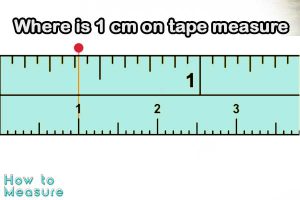Having high or low blood pressure can be a sign of an underlying health condition, so it’s essential to know how to read blood pressure measurements. Blood pressure is the force of your blood pushing against the walls of your arteries as your heart pumps. Understanding your blood pressure readings can help you and your doctor determine if your levels are healthy or if you need to make lifestyle changes or take medication to manage your blood pressure. This article will discuss the basics of blood pressure, its effects, and how to read a blood pressure measurement.
Understanding Blood Pressure Measurements
Blood pressure is a measure of the force of blood against the walls of your arteries. It is an essential indicator of your overall health, as it can indicate if your heart is working too hard to pump blood around your body. Blood pressure measurements are critical to understanding your health and maintaining a healthy lifestyle.
Blood pressure is measured in millimetres of mercury (mmHg) and is recorded as two numbers. The first number, systolic blood pressure, is the pressure in your arteries when your heart contracts and pumps blood. The second number, diastolic blood pressure, is the pressure in your arteries when your heart relaxes between beats.
A regular blood pressure reading is 120/80 mmHg or lower. High blood pressure, or hypertension, is a reading of 140/90 mmHg or higher. Low blood pressure, or hypotension, is a reading of 90/60 mmHg or more down.

Many factors can affect your blood pressure, including age, gender, activity level, diet, and stress. Monitoring your blood pressure regularly is essential to ensure it remains within a healthy range.
First, locate the systolic and diastolic numbers to read a blood pressure measurement. The systolic number is always the first number, and the diastolic number is always the second number. For example, if your blood pressure is recorded as 120/80 mmHg, the systolic number is 120, and the diastolic number is 80.
If your blood pressure is consistently high or low, it is essential to speak to your doctor. They can provide advice on lifestyle changes to help manage your blood pressure. Home blood pressure monitors are also available to help you track your readings.
Finally, there are several tips for maintaining healthy blood pressure levels. These include eating a healthy diet, exercising regularly, avoiding smoking, limiting alcohol consumption, and managing stress.
Systolic and Diastolic Blood Pressure
Systolic and diastolic blood pressure are vital measurements to assess an individual’s cardiovascular health. Systolic blood pressure is the top number in a blood pressure reading and is the pressure in the arteries when the heart contracts. Diastolic blood pressure is the bottom number and is the pressure in the arteries when the heart relaxes. A regular blood pressure reading is typically between 90/60 and 120/80. High blood pressure, or hypertension, is when the systolic blood pressure is consistently higher than 140, and the diastolic blood pressure is always higher than 90. Low blood pressure, or hypotension, is when the systolic blood pressure is consistently lower than 90, and the diastolic blood pressure is always lower than 60. Understanding systolic and diastolic blood pressure is essential when learning how to read blood pressure measurements.
Blood Pressure Ranges
Blood pressure is a measure of the force of the blood against the walls of the arteries. It is an important indicator of overall health and can help determine the risk of developing severe health conditions. Knowing how to read blood pressure measurements is essential for understanding and managing your health.
Blood pressure is measured in millimetres of mercury (mmHg) and is expressed as two numbers. The first number, systolic pressure, is the pressure when the heart contracts and pumps blood. The second number, diastolic pressure, is the pressure when the heart relaxes between beats.
Blood pressure ranges are classified as usual, prehypertension, stage 1 hypertension, and stage 2 hypertension. Normal blood pressure is a systolic pressure of less than 120 mmHg and a diastolic pressure of less than 80 mmHg. Prehypertension is a systolic pressure of 120-139 mmHg and a diastolic pressure of 80-89 mmHg. Stage 1 hypertension is a systolic pressure of 140-159 mmHg and a diastolic pressure of 90-99 mmHg. Stage 2 hypertension is a systolic pressure of 160 mmHg or higher and a diastolic pressure of 100 mmHg or higher.
Understanding blood pressure ranges and how to read blood pressure measurements to maintain healthy blood pressure levels is essential. If your blood pressure is outside the normal range, you must talk to your doctor about ways to lower it.
What Affects Blood Pressure?
Various factors, including age, gender, diet, exercise, stress, and medical conditions, determine blood pressure. Age and gender can influence the average blood pressure of a person. Generally, the older a person is, the higher their blood pressure will be. Men typically have a higher blood pressure than women. Diet and exercise can also affect blood pressure. Eating a healthy diet and exercising regularly can help to keep blood pressure in a healthy range. Stress can also cause a person’s blood pressure to increase. Medical conditions such as diabetes, kidney disease, and thyroid problems can cause blood pressure to rise. Talking to a doctor about any medical conditions affecting your blood pressure is essential.
How to Read a Blood Pressure Measurement?
Blood pressure is a crucial vital sign that provides insights into the health of your cardiovascular system. A standard blood pressure reading consists of two numbers, systolic and diastolic, typically expressed as “X/Y mmHg.” Here’s how to read and understand a blood pressure measurement, along with what these numbers mean:
Blood Pressure Categories:
Blood pressure readings fall into various categories, each indicating different levels of cardiovascular health. These categories include:
| Category | Systolic (mmHg) | Diastolic (mmHg) |
|---|---|---|
| Normal | Less than 120 | Less than 80 |
| Elevated | 120-129 | Less than 80 |
| Hypertension Stage 1 | 130-139 | 80-89 |
| Hypertension Stage 2 | 140 or higher | 90 or higher |
| Hypertensive Crisis | Higher than 180 | Higher than 120 |
Interpreting Blood Pressure Readings:
-
Systolic Pressure (Top Number):
- The systolic pressure represents the maximum force exerted on artery walls when the heart contracts and pumps blood into the arteries.
- High systolic pressure can indicate the heart is working too hard, which may be due to factors like stress, obesity, or underlying medical conditions.
- Low systolic pressure can sometimes indicate problems with heart function or fluid loss, but it’s less common.
-
Diastolic Pressure (Bottom Number):
- The diastolic pressure represents the minimum force exerted on artery walls when the heart is at rest between beats.
- High diastolic pressure suggests that the arteries are less elastic and may be related to conditions like atherosclerosis or kidney disease.
- Low diastolic pressure is less common but can be associated with certain heart conditions and severe blood loss.
Blood Pressure Measurement Guidelines:
When interpreting blood pressure readings, it’s essential to consider the following guidelines:
-
Normal Blood Pressure: A normal blood pressure reading is typically less than 120/80 mmHg. This indicates that your cardiovascular system is functioning within a healthy range.
-
Elevated Blood Pressure: Readings of 120-129 mmHg (systolic) and less than 80 mmHg (diastolic) are considered elevated. This category signifies a higher risk of developing hypertension in the future and may warrant lifestyle changes.
-
Hypertension Stage 1: Blood pressure readings between 130-139 mmHg (systolic) and 80-89 mmHg (diastolic) fall into this category. It suggests early-stage hypertension, and lifestyle modifications or medication may be recommended by a healthcare provider.
-
Hypertension Stage 2: Blood pressure readings of 140 mmHg or higher (systolic) and 90 mmHg or higher (diastolic) indicate moderate to severe hypertension. Immediate medical attention and treatment are usually necessary.
-
Hypertensive Crisis: Blood pressure readings exceeding 180/120 mmHg are considered a hypertensive crisis and require immediate medical attention. This is a severe condition that can lead to organ damage or other complications.
It’s important to note that blood pressure can vary throughout the day and may be influenced by factors such as stress, physical activity, and caffeine intake. To get an accurate assessment of your blood pressure, it’s recommended to measure it under consistent conditions, such as sitting quietly for a few minutes before the measurement.
Regular blood pressure monitoring is essential for managing and maintaining cardiovascular health. If you have concerns about your blood pressure or fall into one of the hypertensive categories, consult a healthcare professional for further evaluation and guidance on managing your blood pressure.
When to See a Doctor?
When understanding blood pressure measurements, knowing when to see a doctor is essential. If your blood pressure is consistently high, you should visit your doctor. High blood pressure can indicate a severe health condition and should be monitored and treated. You should seek medical attention immediately if your blood pressure is very high (over 180/120 mmHg).

You should also see a doctor if your blood pressure is low (less than 90/60 mmHg). Low blood pressure can indicate dehydration or an underlying medical condition. Additionally, you should seek medical attention if you experience any symptoms such as dizziness, chest pain, or headaches.
Home Blood Pressure Monitoring
Home blood pressure monitoring is essential to understanding and managing your blood pressure. Home monitoring allows you to track your blood pressure over time and can help you identify patterns that may indicate a need for lifestyle changes or medical intervention. To accurately measure your blood pressure at home, you should use a home blood pressure monitor that is calibrated correctly and fits your arm properly. It is essential to take multiple readings and record them over time. This will help you and your doctor identify any potential issues and make any necessary adjustments to your lifestyle or treatment plan.
Tips for Maintaining Healthy Blood Pressure Levels
- Eat a healthy diet with plenty of fruits, vegetables, and whole grains.
- Reduce your sodium intake.
- Exercise regularly.
- Limit alcohol consumption.
- Maintain a healthy weight.
- Quit smoking.
- Reduce stress.
- Monitor your blood pressure regularly. Following these tips can help keep your blood pressure readings within a healthy range and reduce your risk of developing high blood pressure. Additionally, if you already have high blood pressure, these tips can help you manage it and keep it under control.
Conclusion
In conclusion, reading blood pressure measurements involves understanding the two numbers displayed on a blood pressure reading, representing the systolic and diastolic pressures. The systolic pressure, or top number, indicates the pressure of blood against the artery walls when the heart beats, while the diastolic pressure, or bottom number, indicates the blood pressure against the artery walls when the heart is at rest between beats. Both of these readings are given in millimetres of mercury (mmHg). High blood pressure, also known as hypertension, is a common health condition that can increase the risk of heart attack, stroke, and other serious health problems if left untreated. The American Heart Association recommends that blood pressure be checked at least once every two years in adults with normal blood pressure (less than 120/80 mmHg). More frequent monitoring may be necessary for individuals with high blood pressure or other health conditions. Understanding and interpreting blood pressure readings are integral to maintaining good health, and anyone concerned about their blood pressure should consult a healthcare provider for further guidance and treatment.











